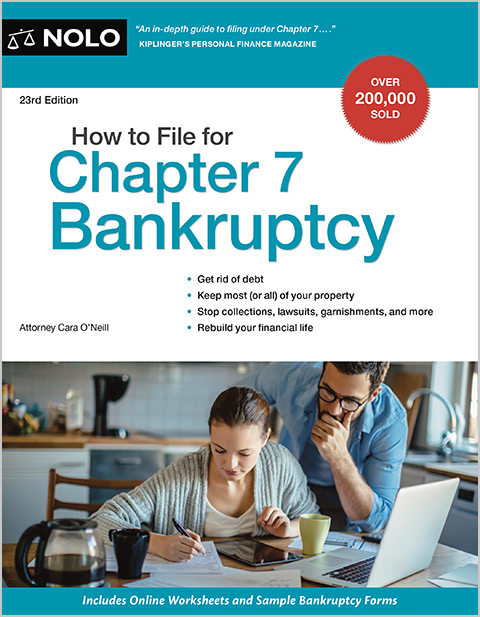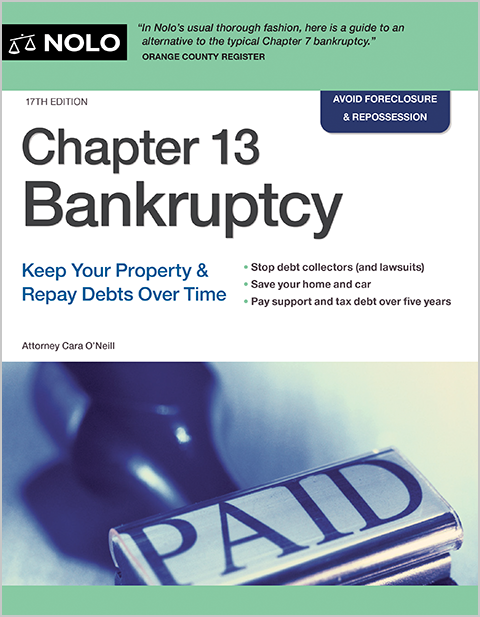Learn what it means for a bankruptcy claim to be contingent, unliquidated, or disputed.
Identifying your debts or "claims" as contingent, unliquidated, or disputed is essential to the bankruptcy process. When filling out numerous bankruptcy forms, you'll need to understand these terms to list and categorize your debts properly.
- You Must List All Debts or "Claims" in Bankruptcy
- Not All Bankruptcy Debts Are Contingent, Unliquidated, or Disputed
- When You'll Have a Contingent, Unliquidated, or Disputed Debt
- What Is a Contingent Claim?
- What Is an Unliquidated Debt?
- What Is a Disputed Debt?
- You Must List All Claims in Bankruptcy
- Paying Claims in Bankruptcy
- Need More Bankruptcy Help?
You Must List All Debts or "Claims" in Bankruptcy
On your bankruptcy forms, you explain your financial situation to the court, trustee, and creditors. Your disclosures will include how much you earn, the debts or "claims" you owe, your real estate and personal property, your monthly budget, and recent property transactions.
You'll disclose each creditor's name, address, and amount owed in your paperwork when listing claims. Learn about completing bankruptcy forms.
Not All Bankruptcy Debts Are Contingent, Unliquidated, or Disputed
Most debts won't need a contingent, unliquidated, or disputed label because the label is only required if it isn't clear that you owe the debt. In most cases, there will be no question that you owe the money. When you don't have an issue to raise to get out of paying the debt, you won't need to label the claim contingent, unliquidated, or disputed.
For instance, suppose you're behind on your car loan. In that case, the claim would be for the outstanding balance. The same would apply to other everyday obligations, such as credit card debt.
Learn about other claim labels you'll need to know in Types of Creditor Claims in Bankruptcy: Secured, Unsecured & Priority.
When You'll Have a Contingent, Unliquidated, or Disputed Debt
Sometimes the amount you owe to a creditor isn't easy to figure out. Each label—contingent, unliquidated, and disputed—identifies a particular issue that needs resolving before paying the claim.
Perhaps the amount you owe could depend on what someone else does or might not be determined. Or, you and the creditor might disagree on how much you owe.
If a problem exists, you'll indicate it when listing that claim on your bankruptcy papers under the appropriate label of contingent, unliquidated, or disputed claim (the form has checkboxes).
What Is a Contingent Claim?
Payment of the claim depends on some event that hasn't yet occurred and might never occur. For instance, if you cosigned a secured loan (such as a car loan or mortgage), you aren't responsible for paying it unless the other person on the loan doesn't pay (defaults). Your liability as cosigner is contingent on the default.
What Is an Unliquidated Debt?
Sometimes you owe money, but you don't know how much yet. The debt might exist, but the exact amount hasn't been determined. For instance, say you've sued someone for injuries you suffered in an auto accident, but the case isn't over. Your lawyer has taken the case under a contingency fee agreement—the lawyer will get a third of the recovery if you win and nothing if you lose. The debt to the lawyer is unliquidated. You won't know how much you'll owe the lawyer until the case settles or gets resolved at trial.
What Is a Disputed Debt?
If you and the creditor don't agree about the amount you owe, or if you owe anything, you'll check this box. For instance, suppose the IRS says you owe $10,000 and has put an involuntary tax lien on your property. By contrast, you believe you owe only $500. You'll list the total amount of the lien, not the amount you think you owe, and indicate that the claim is in dispute (you can explain how much you think you owe in the notes).
You Must List All Claims in Bankruptcy
It's common for someone to want to omit a claim from the bankruptcy paperwork for one reason or another. You can't do it. You must list all claims—the claims you think you owe and those others believe you owe.
It's in your best interest to do so. If you fail to list a claim, the claim might not be erased or "discharged" in your case, even if it would ordinarily qualify as a dischargeable debt.
Paying Claims in Bankruptcy
If money is available to pay creditors, here's what will happen next:
- The bankruptcy trustee appointed to the case will notify creditors that the case is an "asset case."
- A creditor will file a proof of claim form by a particular date to share in the available proceeds.
- The trustee will review the claims and pay them according to the priority payment system in bankruptcy law.
Keep in mind, however, that each situation is unique. If you aren't clear about what will happen to claims in your bankruptcy case, meet with a knowledgeable bankruptcy lawyer.
Need More Bankruptcy Help?
Did you know Nolo has made the law easy for over fifty years? It's true—and we want to ensure you find what you need. Below you'll find more articles explaining how bankruptcy works. And don't forget that our bankruptcy homepage is the best place to start if you have other questions!
|
Our Editor's Picks for You |
|
|
More Like This |
Which Debts Can You Discharge in Chapter 7 Bankruptcy? |
|
Consider Before Filing Bankruptcy |
Motor Vehicle Exemption: Can You Keep Your Car in Chapter 7 Bankruptcy? |
|
Helpful Bankruptcy Sites |
We wholeheartedly encourage research and learning, but online articles can't address all bankruptcy issues or the facts of your case. The best way to protect your assets in bankruptcy is by hiring a local bankruptcy lawyer.
- You Must List All Debts or “Claims” in Bankruptcy
- Not All Bankruptcy Debts Are Contingent, Unliquidated, or Disputed
- When You’ll Have a Contingent, Unliquidated, or Disputed Debt
- What Is a Contingent Claim?
- What Is an Unliquidated Debt?
- What Is a Disputed Debt?
- You Must List All Claims in Bankruptcy
- Paying Claims in Bankruptcy
- Need More Bankruptcy Help?

